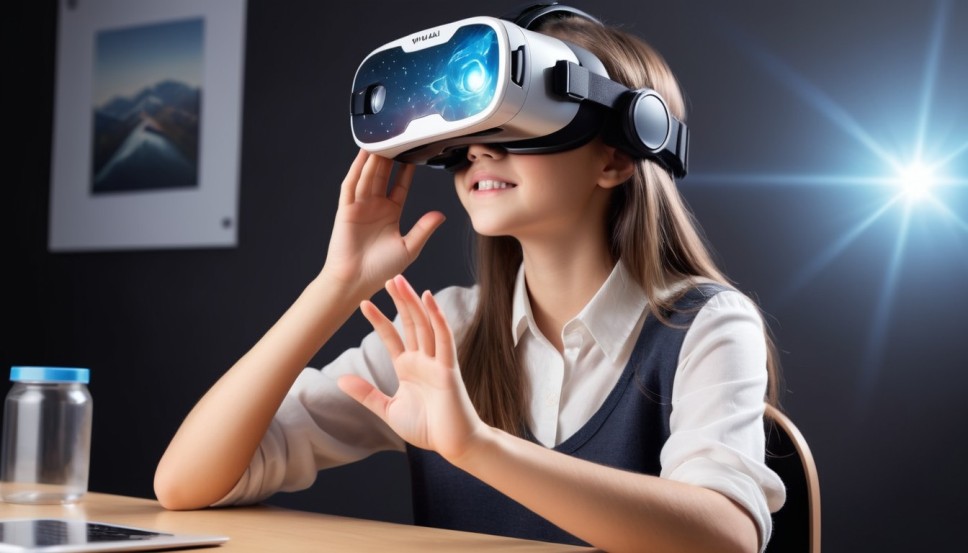As education rapidly evolves, technology plays an increasingly important role in developing new learning methods. Virtual Reality (VR) is a powerful tool that can make learning more engaging and effective by enabling students to experience subjects firsthand. This article explores how VR is transforming education, its benefits, its applications, and strategies for effective use.
The Power of Virtual Reality in Education
Virtual Reality (VR) is revolutionizing education by creating immersive, lifelike virtual environments where students can experience real-world scenarios. This interactive platform not only captures students’ attention but also accommodates different learning styles, making complex concepts easier to understand and retain.
Benefits of Virtual Reality in Learning
Enhanced Engagement and Motivation
One of VR’s biggest advantages in education is its ability to keep students engaged and motivated. Traditional classrooms often struggle to maintain the attention of all students. However, VR’s immersive nature ensures that learners remain fully engaged in the learning process, helping them pay more attention to the material and become more interested in it.
Improved Retention and Understanding
VR enables students to interact with the content they are learning, which greatly enhances understanding and retention. Unlike traditional learning methods, which often involve passive absorption of information, VR allows students to actively engage with and explore the material, making it easier to grasp and remember.
Access to Diverse Learning Experiences
VR breaks down geographic and physical barriers, opening up a world of learning opportunities that would be difficult or impossible in real life. From virtual field trips to ancient Egyptian pyramids to underwater explorations and immersive anatomy lessons, VR transforms classrooms into dynamic learning environments full of possibilities.
Safe Environment for Skill Practice
VR provides a safe, controlled space for students to develop their skills without facing the real-world risks associated with certain tasks. This is particularly beneficial in fields like medicine, aviation, and engineering, where hands-on experience is essential, but mistakes can have severe consequences.
Applications of Virtual Reality in Education
Virtual Field Trips
VR can be used for virtual field trips, allowing students to explore historical landmarks, museums, and natural wonders from the classroom. This immersive experience enhances understanding by offering students a richer, more contextualized view of the subject matter.
Science and Anatomy Visualization
Complex scientific concepts and natural processes are easier to understand with VR. For instance, students can witness the development of a cell or explore the solar system in a fully immersive 3D environment, improving their grasp of these topics.
Language and Cultural Immersion
Language learning is enhanced through VR by immersing students in virtual environments where the target language is spoken. This not only accelerates language acquisition but also helps students understand the cultural context of the language, making the learning process more effective.
Skill Training and Simulation
In vocational education, VR is a valuable tool for skill development. Simulations allow students to practice complex tasks in a safe environment. For example, in fields like surgery, mechanics, or piloting, students can practice procedures without the risks associated with real-life practice, gaining invaluable hands-on experience.
Strategies for Implementing Virtual Reality in Education
Aligning VR with Curriculum Goals
While VR is a powerful educational tool, it must be used strategically to align with curriculum objectives. Educators should select VR experiences that enhance learning and complement the goals of their lessons.
Ensuring Accessibility and Inclusivity
It is crucial to make VR learning accessible to all students. This means providing the necessary hardware, ensuring the content is easy to navigate for students with disabilities, and creating experiences that cater to different learning styles.
Promoting Collaboration and Interaction
Although VR is an immersive experience, it can also foster collaboration. By creating virtual environments where multiple students can work together, VR encourages teamwork, communication, and social learning.
Continuous Evaluation and Feedback
To maximize the effectiveness of VR in education, it is essential to regularly assess how well it helps students learn. Feedback from both teachers and students can help refine and improve VR experiences, ensuring they are as beneficial as possible.
Conclusion
Virtual Reality holds the potential to revolutionize education by creating immersive, interactive learning environments that allow students to explore and study in ways that were previously unimaginable. As VR technology advances, it will continue to play an increasingly significant role in how we learn.




